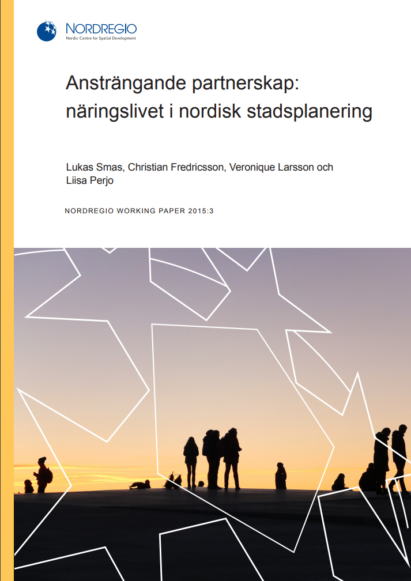How urban planning contributes to economic growth and local development is a question high on the political agenda in the Nordic countries. This highlights, in turn, other key policy issues: how public planning can more efficiently contribute to private urban development, in particular the production of new housing, to accommodate rapid urbanisation and solve the housing crises. The various interactions between different public and private actors and their different rationales are at the heart of these problems, including the potential tensions between efficiency and legitimacy (see Nordregio News Issue 2 2015 Tensions in Nordic urban planning).
Urban development and planning are collaborative processes between different actors. It can, as suggested by John Friedman, be seen as an intervention or a power struggle between state, capital and civil society. However, these collective actors are very heterogeneous. The state includes, for example, both politicians and a variety of civil servants (including planners) at different administrative levels and sectors. The private sector (i.e. capital) includes a diverse array of actors such as financiers, developers, architects, consultants and so on. The civil society (collectively organised private persons) is also an increasingly diverse collective, something that is often neglected or at least overseen when public-private relations and planning efficiency are discussed.
In this working paper, public and private relations in urban planning are opened up and discussed with a focus on how public authorities and private developers collaborate in urban development projects in the Nordic countries. This paper provides different examples of the possibilities and challenges of different forms of collaborations and partnerships between public and private actors. Particular attention is given to the initial unregulated phase in the planning process, which has been shown as crucial for both efficiency and legitimacy (see Nordregio Report 2013:1 A Review of the Norwegian planning system – Scandinavian detailed development planning in an international perspective).
The working paper is the result of a project commissioned by Boverket, the National Board of Housing, Building and Planning, in collaboration with Tillväxtverket, the Swedish Agency for Economic and Regional Growth. The project was part of a joint programme and a Swedish Government initiative focusing on strengthening the collaboration and coordination between public and private actors, and how planning can contribute to local and regional economic growth. Read more about the programme, the different pilot projects and research contributions in Growth demands planning (Tillväxt kräver planering) published by Boverket and Tillväxtverket, with contributions from Nordregio.
The publications are solely in Swedish, but the theme of public and private relations in urban planning are also investigated in Södertörnsmodellen, a collaborative project for sustainable urban development designed to enhance cooperation, coordination and engagement among a diverse group of individuals, local governments and organisations working to create sustainable urban development in a range of forms. There is, similarly, the Baltic Urban Lab project, which aims to improve urban planning by developing and testing new integrated models for brownfield regeneration.








